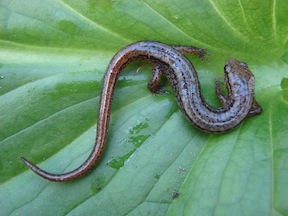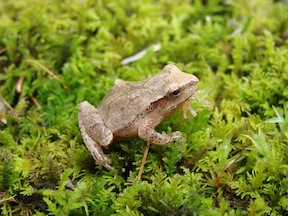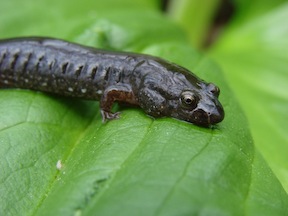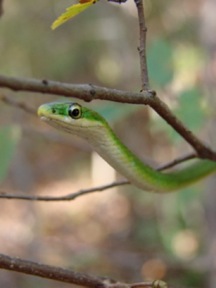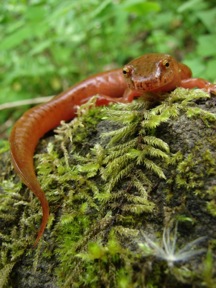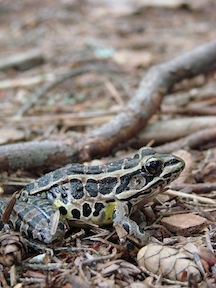Difference between revisions of "Field Herpetology 2012"
(→Course Materials) |
(→Course Resources) |
||
| Line 70: | Line 70: | ||
==Course Resources== | ==Course Resources== | ||
| − | {{pdf|http://hydrodictyon.eeb.uconn.edu/courses/fieldherp/restricted/EEB%203898%20%E2%80%93%20Field%20HerpetologyStudy%20Guide.pdf}} Exam 1 Study Guide<br><br> | + | {{pdf|http://hydrodictyon.eeb.uconn.edu/courses/fieldherp/restricted/EEB%203898%20%E2%80%93%20Field%20HerpetologyStudy%20Guide.pdf}}''' Exam 1 Study Guide'''<br><br> |
==Schedule== | ==Schedule== | ||
Revision as of 21:13, 11 May 2012
EEB 3898 Field Herpetology
Intensive Summer Session I, 2012
Course Duration: May 7th - May 25th, 2012
Meeting Time: Monday through Friday, 9:00 - 12:00 in TLS181
depending on weather conditions some classes will be held at night 7-10 PM instead, allowing us to observe nocturnal amphibians
Contents
Instructor
Elizabeth Timpe
Email: elizabeth.timpe@uconn.edu
Office: Biology/Pharmacy 318
Phone: (860) 486-6215
Office hours: by appointment, often right after class
Course Description and Objectives
Course Description:
Herpetology is the scientific study of the amphibians and reptiles. In this course, we will examine the diversity of both groups, and learn about their basic biology (e.g., their physiology, ecology, behavior, reproductive biology, and conservation). Specifically, goals of this course are to familiarize the student with the identification, natural history, and conservation of Connecticut's amphibians and reptiles through direct field experience (e.g., active searches, turtle trapping, artificial cover objects, night-time road searches, and radio tracking). There will be various opportunities to observe these animals in the field during the day and at night. Students will leave the course with a good background in herpetology, and with a sound understanding of the diversity and distribution of amphibians and reptiles worldwide, with particular emphasis on Connecticut herpetofauna.
Course Objectives:
After completing this course the student should be able to:
- identify Connecticut’s amphibians and reptiles by sight, and in the case of frogs by sound as well
- effectively use standard field techniques and methods for studying herpetofauna (e.g., field note taking, dip netting, radio telemetry, designing sampling arrays, etc.)
- apply with proficiency the scientific method to assess questions and design a project pertaining to herpetofaunal biology and conservation
Course Procedures and Policies
Each class will be comprised of a mini lecture (30-45 minutes), followed by a trip to a local field site. The lecture portion of this course will deal with various aspects of the biology of amphibians and reptiles, including physiological ecology, communication, social behavior, reproduction, parental care, and community ecology. The field trips will focus on the identification of Connecticut amphibians and reptiles, in addition to the demonstration and use of standard herpetological surveying and collecting techniques. There will be some evening field trips to see breeding of local amphibians and daytime field trips to see other species. Students are expected to attend the field trips.
Grades:
Grades will be determined as follows:
- Midterm: 100 pts
- Final: 100 pts
- Paper on individual project: 50 pts
- Presentation on individual project: 50 pts
- Field notebook entries: 75 pts
- Participation: 25 pts
- TOTAL: 400 pts
Attendance:
Due to the accelerated and intensive nature of this summer course (3 hours, 5 days a week, 3 weeks), attendance is fully expected barring any illnesses or emergency. Missing a single class is roughly the equivalent of missing an entire week of a course during a standard semester, so it is very important that you attend every class.
Academic Integrity:
Plagiarism and cheating are violations of the student conduct code, and may be punished by failure in the course or, in severe cases, dismissal from the University. For more information, see Appendix A of the Student Conduct Code.
Disabilities:
If you have a disability for which you may be requesting an accommodation, you should contact a course instructor and the Center for Students with Disabilities (Wilbur Cross Building, Room 201) within the first two weeks of the semester.
Course Materials
Required:
- A Field Guide to Reptiles and Amphibians of Eastern and Central North America 4th edition; R. Conant and J. Collins ISBN-10: 0395904528
- Bound field notebook (composition book is fine and cheap)
- Old/junky footwear and clothes
Recommended:
- Rubber boots
- Pair of waders (will be available if you don’t have a pair)
- Headlamp (will be available)
- Insect repellent and sunscreen
Course Resources
Schedule
[*changes to our field trip itinerary may be made pending weather, etc.]
Pictures from Field Trips
Herps in the News
Additional Resources
Websites:
Local
Snakes of CT
Online Guide to Reptiles and Amphibians of CT
Reptiles and Amphibians of CT
New England Herpetological Society
Amphibians
Video about Amphibian Extinction
Amphibiaweb
AMNH's Amphibian Species of the World
Amphibian Portal from USGS-NBII
Deban Lab Amphibian Feeding
General Herpetology
Society for the Study of Amphibians and Reptiles
American Society of Ichthyologists and Herpetologists
The Herpetologists' League
The Center for North American Herpetology
Partners in Amphibian and Reptile Conservation
New England Partners in Amphibian and Reptile Conservation
EMYSystem Online Turtle Resource
HerpNET
eNature Online Field Guides

